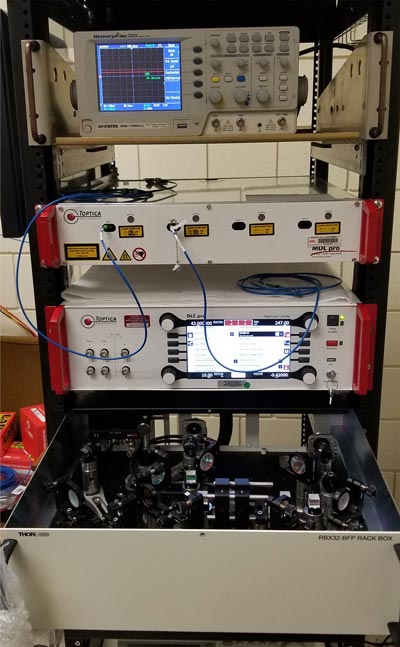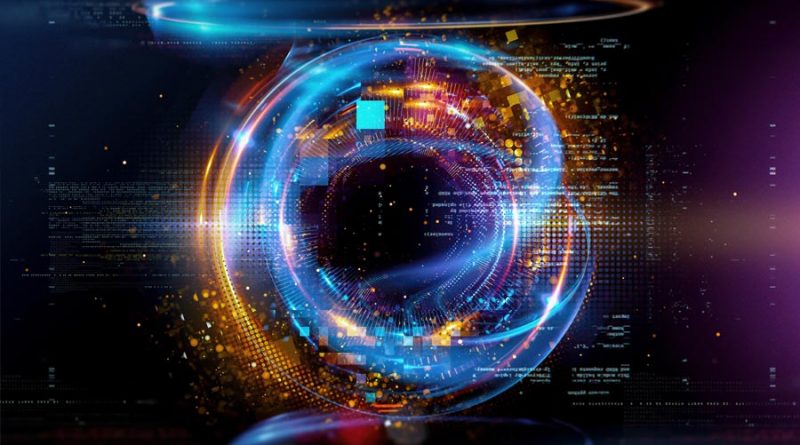US Takes an Important Step Toward Quantum Internet
A recent experiment has created a one-way quantum network between two labs, reaching a milestone on the path to creating a quantum internet
Meredith Fore
(Inside Science) — While researchers continue to make quantum computers increasingly capable, regular computers still hold a massive advantage: Their data, represented in sequences of zeros and ones, can ride the information superhighway. Quantum computers, which instead run on quantum superpositions of zeros and ones, can’t use the internet to communicate with each other.
Multiple projects across the world are working to create a “quantum internet,” a network where quantum computers can share and exchange information. One such project, a collaboration between Brookhaven National Lab and Stony Brook University in New York, recently hit a major milestone: demonstrating that quantum bits, or qubits, from two distant quantum computers can be entangled in a third location. This is a critical step in creating a quantum internet, and significantly, the researchers did it over standard internet cables.
“Part of the challenge of building a quantum internet is, to what extent can I even get quantum information through the kinds of fiber networks that we use for normal communications?” said Joseph Lykken, deputy director of research at Fermi National Accelerator Laboratory and head of the Fermilab Quantum Institute. “That’s really important, and they’re doing this at a longer distance at Brookhaven-Stony Brook than I think almost anybody else.”
A new kind of computing needs a new kind of internet
Quantum computers aren’t superpowerful versions of classical computers. Instead, they approach computing in a whole new way. They can theoretically take advantage of quantum mechanical concepts such as superposition and entanglement to solve certain types of problems — for example, ones that show up when encrypting data or simulating chemical reactions — much faster than traditional approaches. Quantum computing technology is still in the early stages of development, and many of the most promising applications remain unrealized. Other applications may have yet to be discovered.Image

A qubit generator setup at Stony Brook UniversityMedia credits
Stony Brook University
Similarly, the “quantum internet” will not be a superfast and secure version of today’s internet. Instead, it will likely have particular applications transferring quantum information between computers. To do this, the computers’ qubits are entangled, meaning they are put in a superposition in which their separate possible quantum states become dependent on each other and the qubits then become a single quantum system. Measuring the state of one of these qubits breaks the superposition, immediately influencing the state of the others — and this measurement/entanglement process is how quantum information can be transmitted.
Entanglement between two quantum computers has been experimentally possible for several years, but the team at Brookhaven and Stony Brook has gone one step further: They have created the longest quantum network in the United States by showing that two quantum computers can be entangled using a third node. This is the first step in building a network where many computers can “talk” to each other through a central node.
To do the experiment, the researchers faced a challenge unique to quantum systems: In order to entangle quantum particles, which make up qubits, the particles must arrive at the node completely indistinguishable from one another even though they took different paths to get there. The more different the path, the more difficult this is — and the network between Brookhaven and Stony Brook runs over traditional fiber-optic cables that are miles long, going under the neighborhoods and highways of Long Island.
“It’s not really feasible to lay new cables everywhere, so being able to use what’s in the ground was important,” said Kerstin Kleese Van Dam, the director of Brookhaven’s Computational Science Initiative.
Any unexpected interaction between one of the transmitted quantum particles and its environment might have made it distinguishable from the other. But despite all the potential sources of interference, the experiment was able to prove that the particles could travel over 70 kilometers (almost 45 miles) over traditional infrastructure and still arrive indistinguishable.
“Our results demonstrate that these photons can be entangled, that the measurement will work,” said Eden Figueroa, a quantum physicist at Stony Brook University and lead scientist of the project.
The recent experiment was one-way: The quantum computers sent their qubits to the node, but the node simply determined whether they could be entangled and didn’t send anything back. The next step, Figueroa said, is to entangle the computers’ quantum memories, which would be analogous to linking two traditional computers’ hard drives.
“Down the line we hope that instead of just memories, we will be entangling computers — not just connecting the hard drives but also the processing units,” Figueroa said. “Of course, that’s not easy.”Image
Eden Figueroa is head of the Quantum Information Technology Group at Stony Brook University Media credits
Stony Brook University
How far away is the quantum internet?
The remaining obstacles to a quantum internet are a blend of research questions and infrastructure concerns. One issue is that manipulating qubits between quantum computers requires synchronization and supervision in a way that the management of traditional bits doesn’t. This means that while quantum computers can’t directly exchange quantum information over the internet, they still need conventional computers that do use the internet to communicate.
“You cannot build a quantum network and be successful without a classical network,” said Inder Monga, the director of the Energy Sciences Network, which provides networking services to all U.S. national labs. “You have to control, manage and synchronize the quantum devices over the classical network to really transmit information between the two ends of a quantum network.”
This reliance on traditional internet means that the endeavor to build a quantum internet is very interdisciplinary, Monga and Figueroa said. It requires expertise in basic quantum computing research as well as communication infrastructure engineering.
“There are as many research problems as are engineering problems,” Monga said, “and to really get to the vision of the quantum internet, it will require a strong collaboration between people and funding to solve not just the basic physics research problems but also the really grand engineering challenges as well.”
A central obstacle to the quantum internet is what Figueroa calls “the holy grail of quantum communication”: a quantum repeater. A quantum repeater works like an amplifier, in that it receives a signal of quantum information and passes it on so that entanglement between computers can happen at a greater distance. This is necessary to make a quantum internet that spreads beyond Long Island. But there’s a catch: Any interaction with a qubit breaks its superposition — and for information to be transmitted, that can’t happen until the qubit reaches its destination. A true quantum repeater would be able to amplify a qubit without interacting with it, a seemingly paradoxical task.
The recent experiment is essentially half of a quantum repeater. Kleese Van Dam and Figueroa see a completed quantum repeater in the near future: possibly as soon as 2022, Figueroa said. They plan to transmit entanglement to a third lab in Brooklyn but need a quantum repeater to do so.
“We hope that in a few years, we might actually have a working system with repeaters,” Figueroa said. “The minute we can demonstrate that quantum repeater connection, you just need to reproduce the same architecture, again and again, to connect places that are more and more distant from each other.” He sees a network across New York state in 10-15 years.
The last obstacle is far more distant, in a future where the New York quantum network is connected to the one being built by Argonne National Laboratory and the University of Chicago, or the one being built in Europe. Those networks are built using fundamentally different quantum computers — while the New York network uses computers whose qubits are embedded in single trapped atoms, the other networks use what are called solid-state systems to make and manipulate qubits. The two kinds of quantum computers perform computation with completely different architecture.
“You can imagine that the actual quantum internet is going to be a collection of solid-state-based quantum computers like the ones in Chicago and atomic-based quantum computers like the ones we have here, and we have to find a way to connect all of them to really come out with a first prototype of the quantum internet,” Figueroa said. “That would be very cool. That would be like science fiction.”
In July 2020, the U.S. Department of Energy released a “blueprint” of their strategy to create a national quantum internet. This effort includes the Brookhaven-Stony Brook project and the Argonne-University of Chicago project, which are in turn both supported by research at other national labs such as Fermi National Accelerator Laboratory, and Lawrence Berkeley, Oak Ridge, and Los Alamos National Laboratories.
“While quantum computing has gotten a lot of press and funding, the wave is going toward quantum networking,” Figueroa said, “because unless you connect quantum computers into this quantum internet, their applications will be limited. So, it is a good time to be doing these kinds of experiments.”




